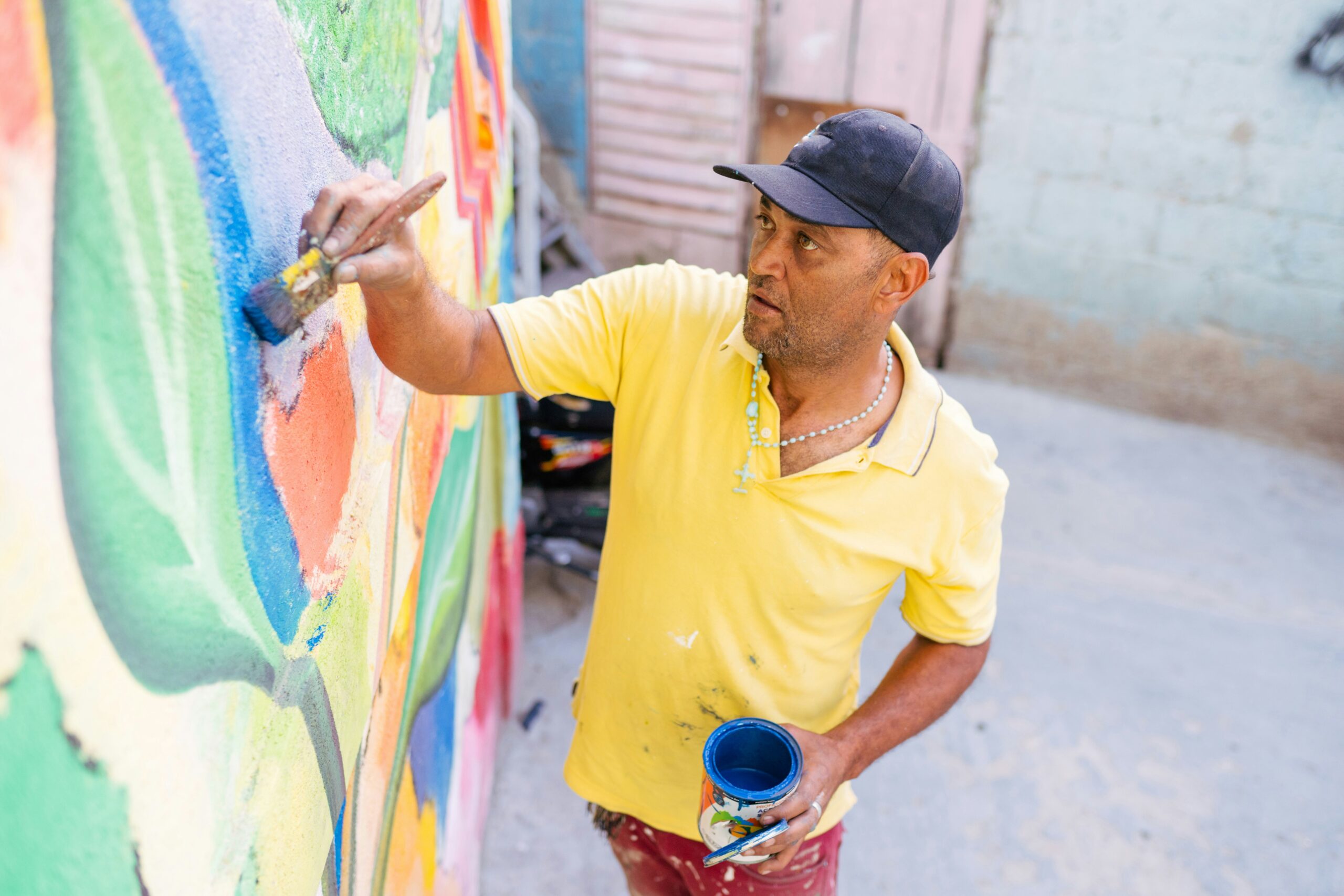
Art, in all its forms, has the remarkable ability to connect people across divides. From murals on urban walls to music echoing through neighborhood festivals, creativity has the power to unite communities through shared experiences. These artistic contributions extend beyond aesthetics; they foster a sense of belonging, spark meaningful dialogue, and bridge cultural and generational divides.
When we honor art’s role in uniting communities, we acknowledge the strength of creative expression as more than a personal pursuit. It becomes a collective act—one that binds people to their environment and to one another. Celebrating these contributions ensures that art remains a cornerstone of community identity.
The Impact of Public Art
Public art is one of the most tangible ways creativity enriches community life. Murals, sculptures, and installations transform ordinary streets into vibrant cultural landscapes. They tell stories of resilience, history, and local pride, while also turning public spaces into destinations.
By being accessible to all, public art invites participation and reflection without barriers. Residents see themselves represented in these works, and visitors gain insights into the community’s spirit. Honoring such contributions highlights how creativity not only makes neighborhoods more beautiful but also more meaningful.
Art as Advocacy and Awareness
Artists have long been at the forefront of social movements, using their work to address pressing issues. From visual pieces that shed light on inequality to performances that challenge injustice, art has the power to amplify the voices of those who are marginalized. These contributions inspire communities to think critically, engage in dialogue, and advocate for change.
When art becomes a tool for awareness, its impact reaches far beyond aesthetics. It creates emotional connections to social issues, inspiring both empathy and action. Recognizing these contributions is an acknowledgment of the courage artists bring to their craft and the vital role they play in shaping civic life.
Cultural Identity and Heritage
The traditions and histories shape communities passed down through generations, and art plays a central role in preserving them. Traditional dance, folk music, storytelling, and crafts are all vital forms of cultural expression that keep heritage alive.
By honoring these artistic contributions, communities celebrate their roots while sharing them with the broader world. They ensure that future generations remain connected to their history and cultural identity. These works act as bridges, linking the past with the present while creating a foundation for cultural continuity.
Healing Through Creativity
Art has the capacity to heal both individuals and communities. In areas affected by hardship, trauma, or displacement, creative expression becomes a powerful tool for recovery. Murals created after natural disasters or performances that honor shared struggles help people process experiences and rebuild resilience.
Community art programs provide a safe space for expression, enabling participants to transform their pain into creativity. By honoring these contributions, we recognize art not only as a cultural force but also as a profoundly human one—capable of fostering hope and emotional restoration.
Empowering Youth Through Art
Young people benefit profoundly when given opportunities to engage in creative work. Whether through school programs, community theaters, or youth-focused festivals, art provides platforms for self-expression and growth. It builds confidence, nurtures problem-solving skills, and fosters leadership.
Youth-centered artistic contributions strengthen communities by creating future leaders who are both creative and empathetic. Honoring these efforts acknowledges the importance of providing young people with the tools to explore their identities, share their stories, and shape the world around them through art.
The Economic Role of Creativity
Beyond cultural and social impact, art contributes significantly to local economies. Festivals, galleries, and creative markets attract tourists, support local businesses, and generate employment opportunities. Neighborhoods revitalized through art become hubs of activity, drawing investment and boosting pride among residents.
Artists themselves are entrepreneurs, contributing to community growth through teaching, collaboration, and the sale of their work. By honoring their contributions, we also highlight the economic vitality they bring. Sustainable investment in the arts ensures that communities continue to thrive both culturally and financially.
Collaboration Between Artists and Communities
Some of the most impactful works emerge from collaboration. Community-driven projects—like participatory murals or collective performances—ensure that art reflects a shared vision. These collaborations strengthen bonds by giving everyone a role in the creative process, fostering a sense of shared ownership.
Such works become more than art; they become symbols of unity and shared ownership. Recognizing these contributions affirms the value of inclusivity in the arts, showing how collaboration can strengthen community ties while creating enduring legacies.
Art as Inspiration for the Future
At its core, art inspires. It offers hope, sparks imagination, and shows communities what is possible. In times of uncertainty, it can be a source of comfort; in moments of progress, it can be a celebration of achievement.
Honoring artistic contributions ensures that this inspiration is recognized and preserved. Communities that invest in creativity invest in their future, creating environments where people feel seen, valued, and motivated to pursue their dreams. Art remains a beacon that guides collective vision forward.
A Legacy of Creativity and Connection
The contributions of artists to their communities extend far beyond individual works. They leave legacies of resilience, pride, and connection that endure for generations. Each mural, song, performance, or sculpture adds to the story of a place and the people who call it home.
By celebrating these accomplishments, we affirm that art is not a luxury—it is essential. It builds stronger, healthier, and more connected communities. Honoring artistic contributions is ultimately about celebrating the human spirit, which thrives when creativity is nurtured and shared.